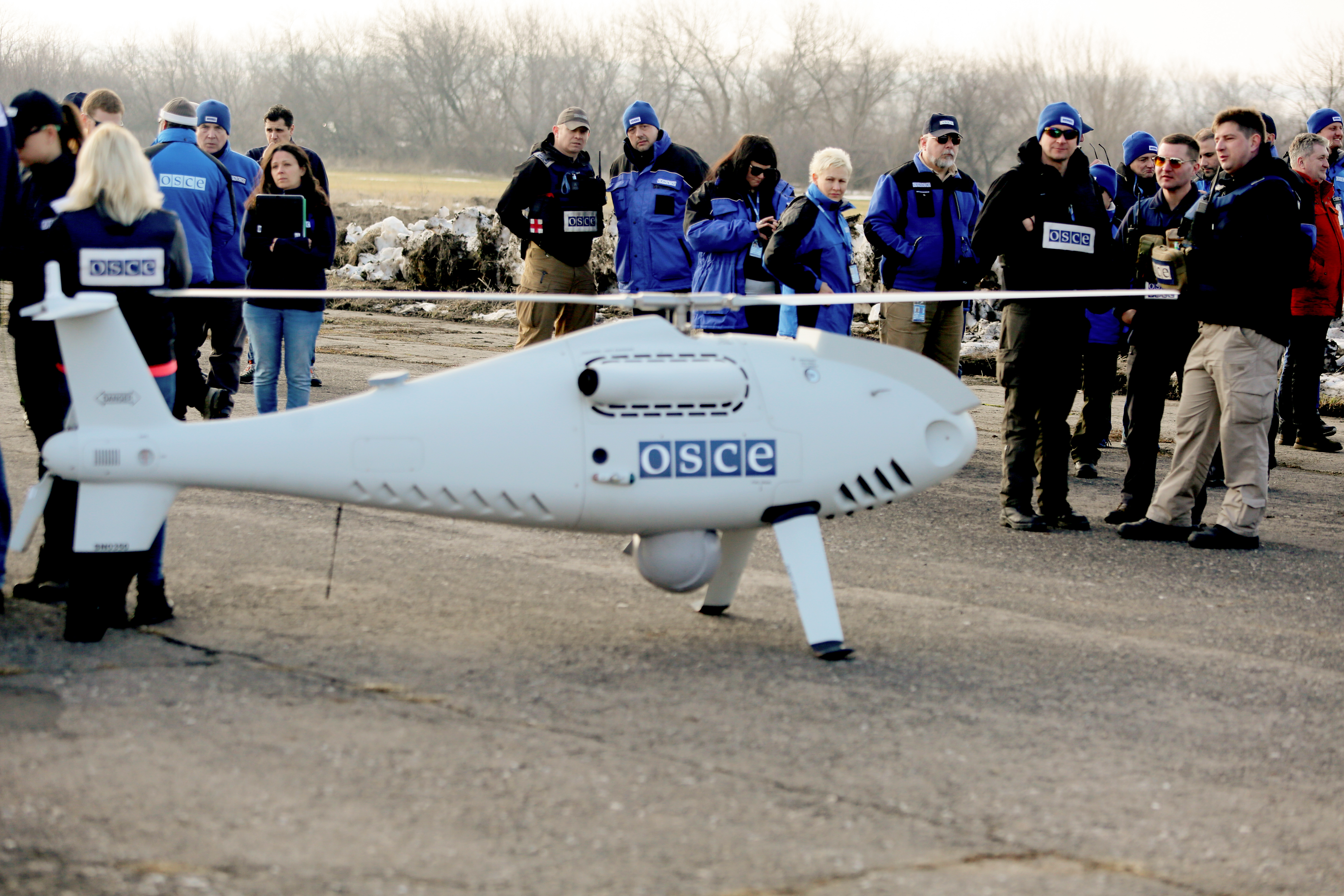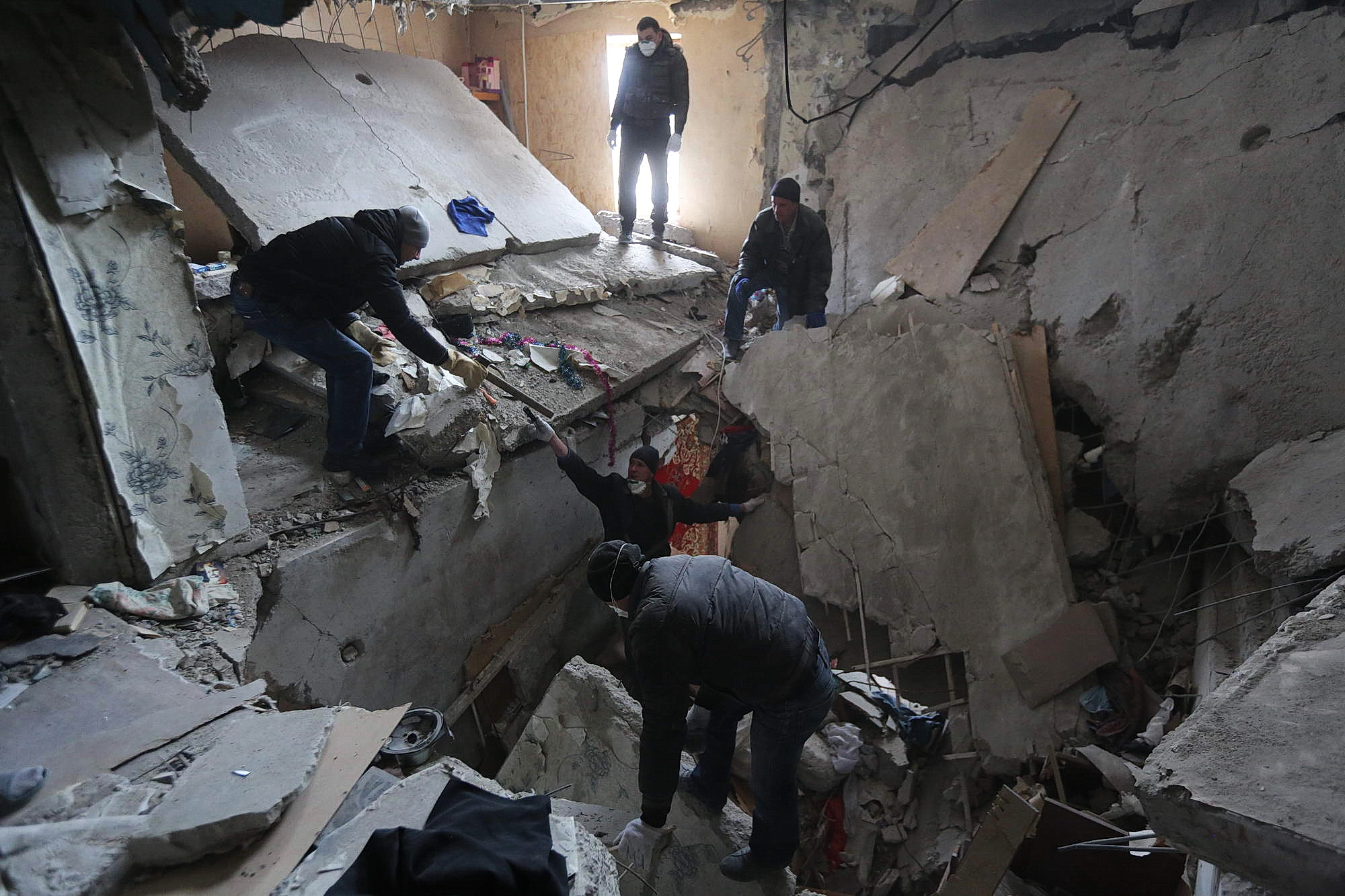No one can blame Alexander Hug for being tired and frustrated.
Hug has seen Russia’s war since its very first days, while serving as the deputy chief of the Special Monitoring Mission of the Organization for Security and Cooperation in Europe, the 57 member-nation organization.
He had another sleepless night before his exit interview with the Kyiv Post on Oct. 17. He leaves his post on Oct. 31 with new wrinkles testifying to the strees of his arduous, four-year assignment as the OSCE’s most visible representative in Ukraine.
Hug regrets leaving Ukraine with no end to the war in sight — a war that has taken 10,500 lives. But he must. He has hit the maximum 10-year limit on OSCE service.
Not only is there no end in sight to the Kremlin’s war in the Donbas, the conflict is slipping off the world’s radar. Real steps are not being taken to end the violence, among them: Russia’s requirement to withdrawal troops, weapons and support for forces in Ukraine’s Donbas, a return of the eastern border to Ukraine’s control and unfettered access by international monitors to all areas of Ukraine.
Hard to leave
The OSCE launched its mission in Ukraine in March 2014 as Russia invaded and occupied Ukraine’s Crimean peninsula and just before the first large clashes triggered by the Kremlin’s instigation of war in the east in April.
Ever since, the OSCE’s blue-and-white armored off-roaders have patrolled the combat zones, reporting on the daily violence of the Donbas war.
Over four years, the mission has faced threats of violence on both sides of the war front, been refused access to parts of the war zone, and been subjected to heavy criticism in the media. Two monitors have lost their lives in Donbas: a U.S. citizen Joseph Stone, who was killed when his patrol vehicle struck a mine on April 23, 2017, and also Vitalie Zara of Moldova, perished in a road accident on Jan. 18, 2018.
The OSCE mission is the only group to see firsthand what has been happening in Kremlin-occupied areas of Ukraine.
Hug, a lawyer and former Swiss army officer, has always been the public face of the mission. He frequently led monitoring activities in the war zone himself.
“I’m not leaving light-hearted,” Hug told the Kyiv Post. “Because there’s so much work to be done. And the solution, at least on the military and technical side of this conflict, seems to be so close that it is hard now to leave, knowing that maybe it just requires one more push here or there to bring it further.”
War in vain
During previous interviews with the Kyiv Post, Hug has said he believes the bloodbath in the Donbas could easily be halted.
He still believes it: both sides have good control over their troops, so an effective cease-fire is absolutely possible — the only thing that stands between peace and war is a political decision, Hug says.

Members of the OSCE Special Monitoring Mission in Ukraine test an unmanned aerial vehicle at the near-frontline village of Stepanivka in the Russian-occupied part of the Donetsk Oblast on March 28, 2018. (AFP)
Meanwhile, the unending armed clashes take their toll on ordinary people. According to the OSCE’s latest figures, as of Oct. 15 at least 39 civilians had been killed and more 164 wounded since the beginning of 2018.
Should the warring parties take simple steps to withdraw heavy weapons and clear mines, those civilians would be now alive or uninjured, Hug said.
For him, it has always been an unnecessary war.
“Even after four-and-a-half years, I’m not claiming I understand Ukraine,” Hug said. “One thing that has become very clear to me though is that the people of Ukraine are very resilient, and in particular those affected directly by the conflict in the east. They have not developed any trace of hate for their Ukrainian compatriots on the other side of the contact line.”
“There might be a few very, very isolated exceptions, but the vast majority of the civilians that I have met made it very clear to us. There’s no underlying group dynamic where you have one group of civilians pitched against another group over ethnic, religious, or cultural divisions.”
“There isn’t such a thing. People don’t believe in this conflict, and it’s purely politically driven.”
Generational problem
When he arrived in the spring of 2014, Hug sincerely believed that the armed clashes in Donbas would not last for long.
Like so many others, his hopes have been dashed.
“I didn’t expect it would last for four-and-a-half years, and it’s unbelievable,” he said. “There’s not been a single day since it started that we haven’t had cease-fire violations — no exceptions.”
As the years passed, he noticed another threat emerging: The inevitable alienation of people divided by the frozen frontline, the thing producing further schism in the region.
“Take a kid that was five years old in (Russian-occupied) Donetsk city and a kid across in (Ukrainian-controlled) Avdiyivka (just 5 kilometers north of Donetsk) that was five years old back in 2014,” Hug said.
“These two kids are now 10. They don’t remember anything other than conflict, violence, death, destruction, propaganda, rumors.”
They simply they live in different realities, at least in two different realities, if not more, he added.
“And after another five years of the same mess in their lives, as young adults they won’t remember what it was like before the conflict. They will belong to the generation that drives this region, and then you will have a generational problem.”
“They will also hand it all down to their children, so you will have an inherent historical problem building up. These are the big tensions that come with this violence, if we look beyond the day-to-day madness that we report regularly.”
Who is blind?
As Europe’s only ongoing armed conflict, labeled by foreign media as “the forgotten war” has dragged on, Hug regrets not being able to keep the world community’s attention on the fighting in the Donbas.
“In the broad picture, I was not able to mobilize the world community to a degree that it would rein in this conflict and bring it to an end,” he said. “Despite the fact that we chalk up facts on a daily basis, verified facts collected with hard work by our monitors, the attention this conflict gets is dwindling.”
“It is confined to the back pages,” he said, except “when there are mass casualties. It comes up for half a day maybe, and then it goes back again.”
At the same time, the OSCE mission itself has repeatedly been attacked for allegedly turning a blind eye to Russia’s direct military involvement in the Donbas and not recognizing it as a party to the war.
The mission only recently revealed evidence that unequivocally proves Russia has intervened militarily in eastern Ukraine.
On Aug. 9, the mission published a video showing military truck convoys entering and exiting Ukraine through an uncontrolled section of Russian-Ukrainian border in the dead of night.
Just two days later, the mission reported it had also spotted in the Russian-occupied part of the Donbas “four distinct electronic warfare systems,” identified as Leer‑3 RB‑341V, 1L269 Krasukha, and RB‑109A Bylina units, as well as a Repellent‑1 mobile anti-drone system — all designed and produced in Russia and operated exclusively by the Russian army.
As the Kyiv Post reported in August, the OSCE has also observed Russian TORN radio intelligence systems on five occasions over the last several months in the occupied Donbas.
Moreover, as Hug himself reported on Oct. 13, the mission’s drones again spotted military convoys crossing the Russian-Ukrainian border for three nights running between Oct. 10 and 12.
The recent OSCE revelation was all over the Ukrainian news — but has triggered no additional international sanctions against Moscow.
“I’ve been asked year in and year out: “Tell us that the Russians are in the east, tell us that Russian weapons are there, tell us that they’re bringing their weapons across the border, et cetera,” Hug says. “The answer I had was this: the facts speak for themselves. They’re in our reports, and we don’t give (our own) conclusions in our reports.”
The facts are that Russian military convoys are leaving and entering Ukraine, specific types of weapons and electronic warfare systems have been seen there, and people have told the OSCE they belong to Russian army units deployed in Ukraine, Hug said. This information is publicly available, but nobody talks about it, he said.
“Yes, we might not see everything,” he added. “But the people that are really blind to our facts that we establish are the decision-makers. They’re unwilling to react to the reality that we report, because it’s uncomfortable to read.”

A family of local civilians trawl through the debris of their apartment destroyed by tank fire in the city of Avdiyivka on Feb. 17, 2017. (Volodymyr Petrov)
Despite the overwhelming evidence that Russia is a party to this conflict, as documented by the OSCE itself, 39 of the almost 700 OSCE monitors currently patrolling the Donbas war zone are Russian citizens. Ukrainian citizens are not permitted to be monitors as Ukraine is a party to the conflict.
However, as Hug said, the mission has always made sure its members respect the rules of the OSCE as a non-partisan international organization, rather than serve the interests of their home nations.
“I clearly understand the emotional attitudes of Ukrainians to the fact that Russian citizens are working as OSCE staff members,” Hug said. “(But) I have no right to judge them for that… And if any of our colleagues, including our Russian colleagues, make a mistake and do not abide by the rules that they signed up for, they will be held to account. But we’d need … to do this on the basis of facts, not (on the basis of) their passport or nationality.”
Isolated progress
The warring sides will stop fighting when it is in the interests of both sides.
When the South Donbas water pipeline was damaged — a source of water for 1.2 million residents — both sides stopped fighting long enough for the vital lifeline to be repaired. The OSCE mission helped both sides start a dialogue over the issue.
Hug drew the lesson that “it is possible to put an end this madness.”
Big vacation
In late September, the OSCE mission named Hug’s successor: Mark Etherington, a former British Parachute Regiment officer who has also worked with the OSCE in Ukraine since 2014, will take over from Hug on Nov. 1.
Meanwhile, Hug is already looking forward to a long-awaited vacation.
He plans to spend it here in Ukraine: seeing the Carpathian Mountains and the southern coast, visiting Lviv, and enjoying a restful stay in Kyiv — none of which he had time for while trying to bring peace to the Donbas.
He does not know yet where he will be working next.
“One thing for certain is that after I leave Ukraine, what I’ve experienced here over the last four-and-a-half years will stay with me,” Hug said. “I won’t forget it. Mentally, but also practically, I will still be trying to help bring this unnecessary conflict to an end.”
